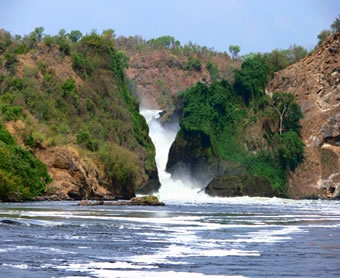Uganda's population is predominately rural, and its population density is highest in the southern regions. Asians constituted the largest non-indigenous ethnic group in Uganda until 1972, when the Idi Amin regime expelled 50,000 Asians who had been engaged in trade, industry, and various professions. After Amin's overthrow in 1979, Asians slowly began returning, but Uganda's Asian population has never reached the same numbers. Idi Amin was a military leader and President of Uganda from 1971 to 1979. He destroy alot of this country one of them is that he abuse of human rights and do alot of corruption.
Arab traders moved inland from their enclaves along the Indian Ocean coast of East Africa and reached the interior of Uganda in the 1830s, they found several African kingdoms with well-developed political institutions dating back several centuries. These traders were followed in the 1860s by British explorers searching for the source of the Nile River. In 1888, control of the emerging British "sphere of interest" in East Africa was assigned by royal charter to the Imperial British East Africa Company, an arrangement strengthened in 1890 by an Anglo-German agreement confirming British dominance over Kenya and Uganda.
In September 1967, a new constitution proclaimed Uganda a republic, gave the president even greater powers, and abolished the traditional kingdoms. On January 25, 1971, Obote's government was ousted in a military coup led by armed forces commander Idi Amin Dada. Amin declared himself president, dissolved the parliament, and amended the constitution to give himself absolute power.Idi Amin's 8-year rule produced economic decline, social disintegration, and massive human rights violations. In October 1978, Tanzanian armed forces repulsed an incursion of Amin's troops into Tanzanian territory. The Tanzanian force, backed by Ugandan exiles, waged a war of liberation against Amin's troops and Libyan soldiers sent to help him. On April 11, 1979, Kampala was captured, and Amin fled with his remaining forces.
Obote ruled until July 27, 1985, when an army brigade, composed mostly of ethnic Acholi troops and commanded by Lt. Gen. Basilio Olara-Okello, took Kampala and proclaimed a military government. Obote fled to exile in Zambia. The new regime, headed by former defense force commander Gen.The 1995 constitution established Uganda as a republic with executive, legislative, and judicial branches. The constitution provides for an executive president, to be elected every 5 years. President Yoweri Museveni, in power since 1986, was elected in 1996 and reelected in 2001, 2006, and 2011.
Principal Government Official
President and Commander in Chief--Yoweri Kaguta Museveni
Vice President--Gilbert Bukenya
Prime Minister--Apollo Nsibambi
Foreign Minister--Sam Kutesa
Minister of Defense--Crispus Kiyonga
Ambassador to the United States--Perezi K. Kamunanwire
Although U.S.-Ugandan relations were strained during the rule of Idi Amin in the 1970s, relations improved after Amin's fall.Bilateral relations between the United States and Uganda have been good since Museveni assumed power, and the United States welcomed Museveni’s efforts to end human rights abuses and to pursue economic reform.
Natural Disasters from 1980 - 201
| No of events: | 61 |
| No of people killed: | 2,280 |
| Average killed per year: | 74 |
| No of people affected: | 4,938,644 |
| Average affected per year: | 159,311 |
| Ecomomic Damage (US$ X 1,000): | 72,671 |
| Ecomomic Damage per year (US$ X 1,000): | 2,344 |
World Bank
Department of State
All Africa
FSD International
Maps of the World






No comments:
Post a Comment